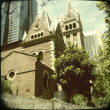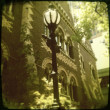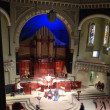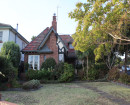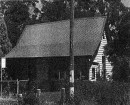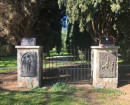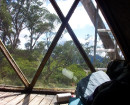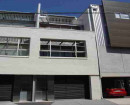Back to search results
ST MICHAELS UNITING CHURCH
122 -136 COLLINS STREET MELBOURNE, MELBOURNE CITY
ST MICHAELS UNITING CHURCH
122 -136 COLLINS STREET MELBOURNE, MELBOURNE CITY
All information on this page is maintained by Heritage Victoria.
Click below for their website and contact details.
Victorian Heritage Register
-
Add to tour
You must log in to do that.
-
Share
-
Shortlist place
You must log in to do that.
- Download report

ST MICHAELS UNITING CHURCH SOHE 2008




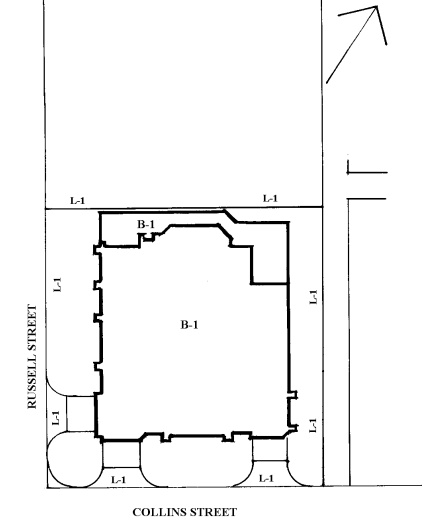
On this page:
Statement of Significance
What is significant?
A small chapel stood on this site from 1841 following the arrival of the Rev William Wakefield in 1838. Tasmanian merchant and pastoralist Henry Hopkins had asked the Colonial Missionary Society in England for a pastor for the infant settlement of Port Phillip in the 1830s. The present building was designed by the prominent architects Reed and Barnes between 1863 and 1866. The foundation stone was laid by Henry Hopkins on 22 November 1866 and the building was constructed by John Young. The chapel was built in 1966 to mark the centenary of the building. The interior was altered in 1978 when some of the original seats were removed.
How is it significant?
The former Independent Church is of architectural, historical and scientific importance to the State of Victoria.
Why is it significant?
It is architecturally important as an exuberant and outstanding example of Lombardic Romanesque style and one of prominent Victorian architect Joseph Reed's finest buildings. The building is very finely detailed both externally and internally. It is of importance as a particularly early example of the use of polychromatic brickwork in Victoria, and unusual use of the style. Other polychromatic churches in Victoria are Gothic in style. The Independents or Congregationalists were one of the most experimental of the denominations and the use of such an unusual style reflects this independent spirit. The building is also of architectural importance as having a highly formative influence on subsequent polychrome church work, and on polychrome architecture generally in Victoria.
It is the finest example in Victoria of a galleried auditorium type church and is complete with tiered seating arranged in a semicircle around the pulpit. The interior is outstanding, with its semicircular arches on slender iron columns over the half circle gallery, with a domed ceiling above. The spiral gallery stairs are also a notable feature. The auditorium is of importance as having one of the most scientifically acoustic design of any nineteenth century churches in Victoria.
It is an important example of an Independent or Congregational church and is of historical importance for its associations with the Congregational denomination, and as the site of the earliest church of this denomination in Victoria. Established in England during the Puritan movement of dissent from the Church of England, the Congregational denomination was introduced to the colony by early settlers such as John Pascoe Fawkner and John Gardiner. It remained an Independent or Congregational church from the time it was built in 1866-67 until the formation of the Uniting Church in 1977 following an agreement between the Presbyterian, Methodist and Congregational churches in 1971.
Show more
Show less
-
-
ST MICHAELS UNITING CHURCH - History
Associated People: Assoc.People HENRY HOPKINS, JOHN PASCOE FAWKNER; Reed & Barnes;ST MICHAELS UNITING CHURCH - Permit Exemptions
General Exemptions:General exemptions apply to all places and objects included in the Victorian Heritage Register (VHR). General exemptions have been designed to allow everyday activities, maintenance and changes to your property, which don’t harm its cultural heritage significance, to proceed without the need to obtain approvals under the Heritage Act 2017.Places of worship: In some circumstances, you can alter a place of worship to accommodate religious practices without a permit, but you must notify the Executive Director of Heritage Victoria before you start the works or activities at least 20 business days before the works or activities are to commence.Subdivision/consolidation: Permit exemptions exist for some subdivisions and consolidations. If the subdivision or consolidation is in accordance with a planning permit granted under Part 4 of the Planning and Environment Act 1987 and the application for the planning permit was referred to the Executive Director of Heritage Victoria as a determining referral authority, a permit is not required.Specific exemptions may also apply to your registered place or object. If applicable, these are listed below. Specific exemptions are tailored to the conservation and management needs of an individual registered place or object and set out works and activities that are exempt from the requirements of a permit. Specific exemptions prevail if they conflict with general exemptions. Find out more about heritage permit exemptions here.Specific Exemptions:EXEMPTIONS FROM PERMITS:
(Classes of works or activities which may be undertaken without a permit under
Part 4 of the Heritage Act 1995)
General Conditions:
1. All exempted alterations are to be planned and carried out in a manner
which prevents damage to the fabric of the registered place or object.
2. Should it become apparent during further inspection or the carrying out of
alterations that original or previously hidden or inaccessible details of the
place or object are revealed which relate to the significance of the place or
object, then the exemption covering such alteration shall cease and the
Executive Director shall be notified as soon as possible.
3. If there is a conservation policy and plan approved by the Executive
Director, all works shall be in accordance with it.
4. Nothing in this declaration prevents the Executive Director from amending
or rescinding all or any of the permit exemptions.
5. Nothing in this declaration exempts owners or their agents from the
responsibility to seek relevant planning or building permits from the
responsible authority where applicable.
* Minor repairs and maintenance which replace like with like.
* Removal of metal framed seating (pews) and replacement with timber seating
to match the extant original seating (pews).
-
-
-
-
-
ROSAVILLE
 Victorian Heritage Register H0408
Victorian Heritage Register H0408 -
MEDLEY HALL
 Victorian Heritage Register H0409
Victorian Heritage Register H0409 -
TRADES HALL
 Victorian Heritage Register H0663
Victorian Heritage Register H0663
-
'The Pines' Scout Camp
 Hobsons Bay City
Hobsons Bay City -
106 Nicholson Street
 Yarra City
Yarra City -
12 Gore Street
 Yarra City
Yarra City
-






